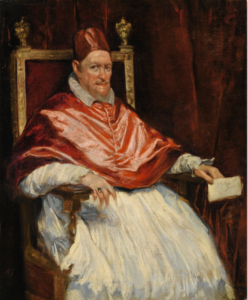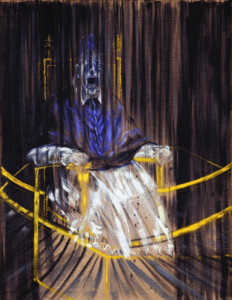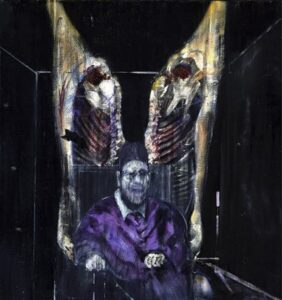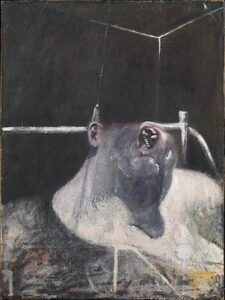A look at Francis Bacon
Since Halloween is approaching, let’s talk about the painter Francis Bacon.


Francis Bacon was a British expressionist who was known for his edgy and sometimes grotesque work. His work is shocking and thought-provoking, which makes it worth looking at.
Bacon’s style seems to be inspired by Pablo Picasso’s cubist style, but he takes a looser approach.
I think what makes his work so uncomfortable to look at – his dark color schemes, rough brush strokes and how he distorts the faces and figures of his subjects.
The painting “Study After Velázquez’s Portrait of Pope Innocent X,” made in 1953, is a perfect example of Bacon’s style. Inspired by the artist Diego Velázquez, Bacon recreated his portrait in his own style.
The original painting by Velázquez is calm, clean and made with warm, rich colors.
Bacon takes a different approach.
The Pope is seen screaming as the black paint overtakes his body. He makes the Pope look like a ghost.
Bacon created another painting inspired by the same painting by Velázquez. This time, with meat. Meat seems to be a common theme in Bacon’s work. I’m not sure if it is a reference to his last name or for another reason.

Bacon’s painting “Head I,” made in 1948, is particularly striking as well. What sticks out to me in this painting is how he manipulated his subject’s face. The twisted mouth becomes the focal point of the piece, and the lack of eyes makes it very uncomfortable to look at. There is just darkness surrounding a contorted screaming figure. Paintings like this make me wonder if Bacon is depicting the subject’s internal struggle or his own.
I’ll never really understand Bacon and his work. If he were still alive, I would probably ask him if he’s okay.

But his work offers a different experience for art viewers. You don’t usually see work like his showcased in galleries or online. Despite how odd his subject matter can be, I think it is worth seeing a different side of expressionism.
And for artists, he shows how easily you can create emotion by manipulating your subject, using symbolism and experimenting with your medium.







